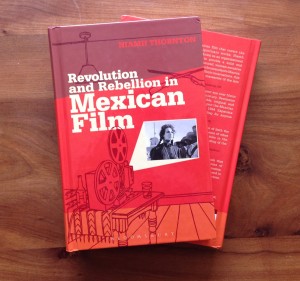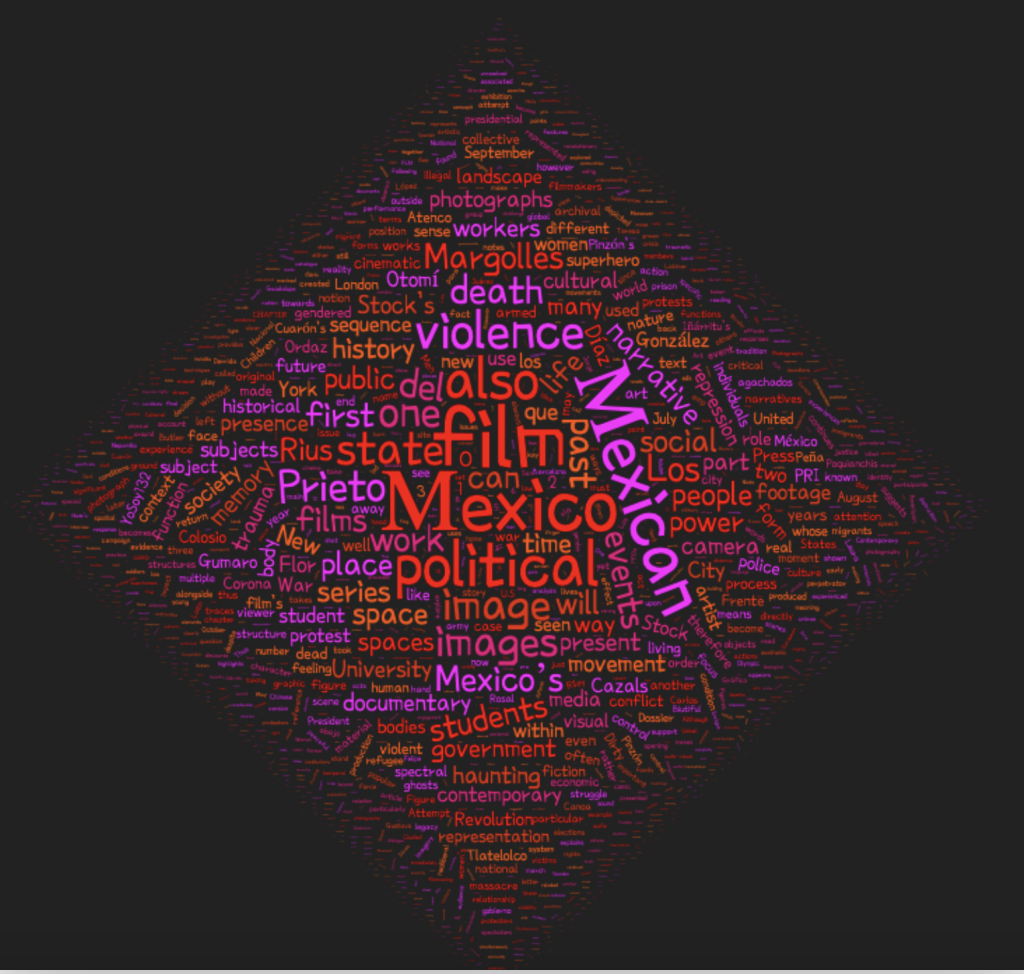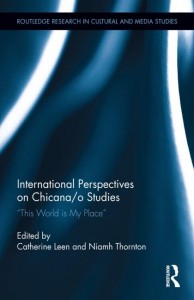BREWS and BROWS
I am co-lead on a project on the shape and meaning of the eyebrow in contemporary culture. It is an interdisciplinary collaborative project involving academics, arts organisations, and local participants. My research focus is on micro-gestures and micro-expressions in screen performances. We held an event at FACT Liverpool from 25th-28th April 2018 and a follow up symposium on the 2nd of October 2018. We also held an event as part of the Homotopia Festival in the Open Eye Gallery on the 27th of November 2018. Follow us on Twitter: @Brews&Brows and Instagram @brewsnbrows and read our site for updates and news. We are currently editing a documentary that has emerged from the interviews we held as part of these events.
María Félix: The Authentic Mexican Film Icon
María Félix (1914-2002) is the inspiration for our eyebrow project and an iconic figure in Mexican film, yet undervalued by the academy. I am currently completing a monograph on her life and work. Félix was a film star whose career took off during the Golden Age of Mexican film (1930s-50s). She became the best paid actor (male or female) and made films in Mexico, Argentina, Italy, and Spain in the 1950s and 1960s, working with filmmakers such as, Jean Renoir, Luis Buñuel, Julio Bracho, Emilio Fernández and Ismael Rodríguez. From her early starring role as the eponymous Doña Bárbara (1943) (after which she was referred to as ‘La Doña’), she became synonymous with powerful, independent on-screen performances that was supported by an equally independent and unconventional off-screen star persona, familiar to the audience through the popular press. Although none of her 47 roles were in English-language films, she has an international presence that belies the lack of critical attention she has heretofore been given. This is particularly evidenced in the volume of tributes to her online, especially on YouTube, which I have previously written about (Thornton, 2010), but can also be seen in the repeated screenings of her films on European and Mexican television.
MEXICAN WAR STORY
In 2020, I published my work that considers the multiple ways taste and violence intersect focusing on in the Mexican context. This continues the concept of violence in cinema and expands it to other cultural fields and practices. For a link to the SUNY Press page, click on the title: Tastemakers and Tastemaking: Mexico and Curated Screen Violence.
Previous Work on Violence in Mexican Film
Since February 2015, Revolution and Rebellion in Mexican Film is out in paperback and ebook.
 My monograph Revolution and Rebellion in Mexican Film has been published by Bloomsbury. This is the culmination of two funded research trips, the first by the University of Ulster and the second by the British Academy. This monograph examines the significance of the representation of conflict in Mexico with a particular focus on film from the Golden Age of the 1930s and 1940s to the present day. This is the first monograph to closely examine the war story in Mexican film.
My monograph Revolution and Rebellion in Mexican Film has been published by Bloomsbury. This is the culmination of two funded research trips, the first by the University of Ulster and the second by the British Academy. This monograph examines the significance of the representation of conflict in Mexico with a particular focus on film from the Golden Age of the 1930s and 1940s to the present day. This is the first monograph to closely examine the war story in Mexican film.
Here are some reviews:
“In this highly readable book Dr. Thornton casts her expert eye over filmic engagement with definitional conflicts in Mexican history. Revolution and Rebellion in Mexican Films is informative, accessible, original and sophisticated. We learn of a wide range of films that depict the Mexican Revolution, the 1968 student movement, and the 1994 Zapatista rebellion. This book is essential and enjoyable reading for anyone interested in Mexican history and film.” – Deborah Shaw, School of Creative Arts, Film and Media, University of Portsmouth, UK
“A breathtakingly authoritative review of Mexican film that covers the major titles as well as lesser-known but significant works, Niamh Thornton’s agile history takes the Mexican Revolution as an organizational principle and expands in multiple directions to provide a solid and entertaining foundation for the beginner and a nuanced, women-sensitive analysis for the specialist. From stars María Félix to subcomandante Marcos, from the original Villa and Zapata to their strangest filmic incarnations, this book has it all—including treatment of the appalling massacres of the late 1960s and early 1970s.” – Emily Hind, Associate Professor of Spanish, University of Wyoming, US
“Revolution and Rebellion in Mexican Film studies the voices of both the State and the people, sometimes in confrontation, in the cinema of what was once called the Mexican War and its subsequent battles in the 20th century. It is an important contribution to the understanding of the Mexican cinematic imagination and societal realm.” – Fernando Fabio Sanchez, Assistant Professor of Spanish, California Polytechnic State University, US
“This is an insightful, well researched, and original piece of work that considers the filmic representations of the Revolution, notions of revolution, and the framing of political dissonance in Mexican cinema. Thornton’s book is a valuable addition to the field of Mexican film, and is an essential resource for students and researchers of Latin American, international and transnational film.” – Miriam Haddu, Senior Lecturer in Mexican Visual Culture Studies, Royal Holloway, University of London, UK
“Thornton presents a fresh look at the history of cinema in Mexico that depicts the Revolution of 1910, the student movement of 1968, and the Zapatista rebellion of 1994 to the present. Thornton’s book is not only a history, but a well-thought out criticism of the history of cinema in Mexico and of the selected films reviewed in this volume. This book is for the general reader of Mexican history, history of cinema, and is recommended for classroom use,” Colonial Latin Historical Review.
– See more at: http://www.bloomsbury.com/us/revolution-and-rebellion-in-mexican-film-9781441168122/#sthash.FeRWzOTR.dpuf
-Further reviews on Good Reads: http://www.goodreads.com/book/show/17834495-revolution-and-rebellion-in-mexican-film
Edited Collection
In 2020 an edited collection, following on from the event: SPECULAR GHOSTS: MEMORY AND TRAUMA IN MEXICAN VISUAL CULTURE, 12th September 2014 in Senate House, co-organised with Miriam Haddu, Royal Holloway, University of London. For more details on the evolution of the project, click here:
http://specularghosts.wordpress.com/
The title of the forthcoming edited collection with Edinburgh University Press, LEGACIES OF THE PAST: MEMORY AND TRAUMA IN MEXICAN VISUAL AND SCREEN CULTURE.
For a visualisation of the project, here’s a wordle screenshot of the book:
CHICANO STUDIES
Edited Collection
Catherine Leen from NUI, Maynooth and I have co-edited a volume, bringing together international scholars from the US, Mexico, Russia, Spain, UK and Ireland to re-examine what Chicano studies mean in a transnational context. The book is entitled International Perspectives on Chicana/o Studies:This World is My Place and my contribution is a chapter entitled “My Super Sweet Fifteen: the Internationalisation of Quinceañeras in Literature and Film”.
From the Introduction:
“This volume presents a snapshot of international approaches to Chicana/o Studies as we enter the second decade of the twenty-first century. It has long been assumed that this particular discipline is only relevant to U.S. readers, particularly those residing in the Southwest region of the United States, but, in fact, Chicana/o Studies has become influential across borders and features in the teaching and research of universities worldwide. This interdisciplinary, humanities-based volume approaches the internationalization of Chicana/o Studies through cultural production, with essays on literature, art, mass media and film.”
Click here to see the table of contents.
Here are some reviews:
“This exciting and timely anthology provides great insight into the growing international appeal of Chicana/o Studies, a field previously believed to be of merely regional and local interest within the United States,” Guisela Latorre, The Ohio State University, USA.
“Leen and Thornton’s volume represents a major new contribution to Chicano/a Studies in English. While offering a clear and focused investigation of Chicano identities and culture, it is sensitive to the contingent, evolving and multifaceted nature of those identities and their cultural manifestations. Unusually international in approach and with a wide range of excellent contributors, the book covers areas as diverse as literature, art, film, institutional programmes, everyday life practices and wider matters of cultural identity and identification. It is essential reading for all those interested in the field,” Philip Swanson, The University of Sheffield, UK.

